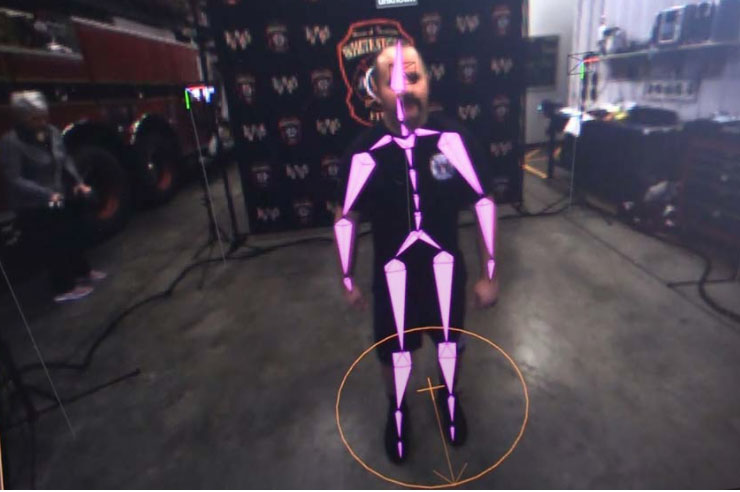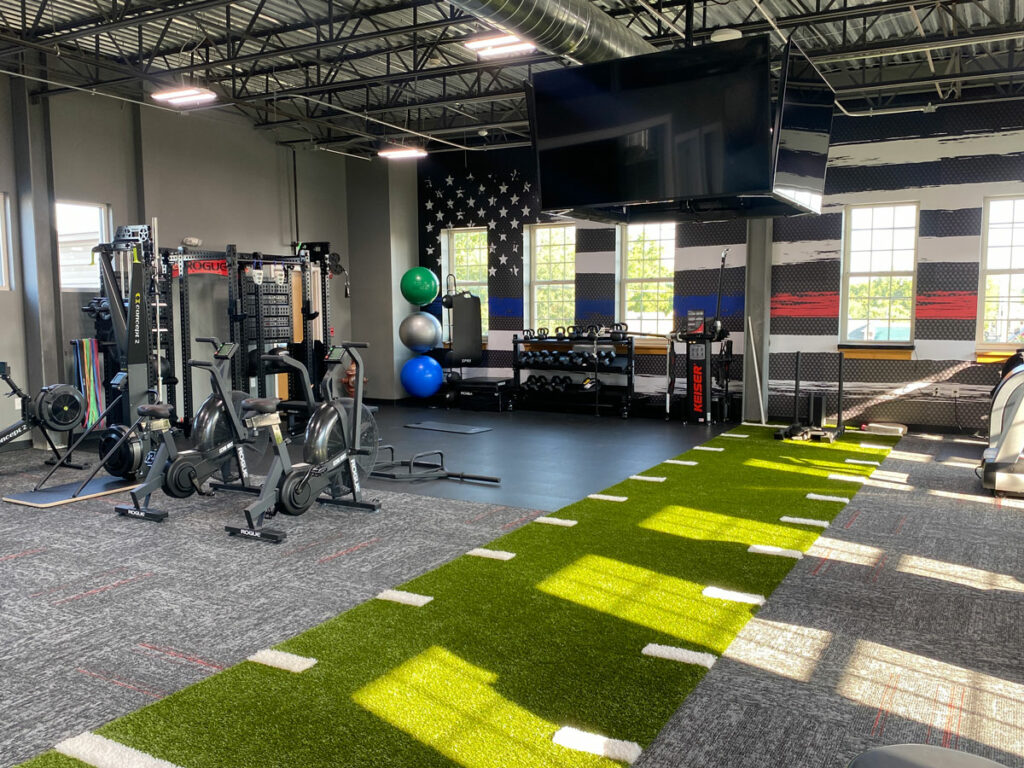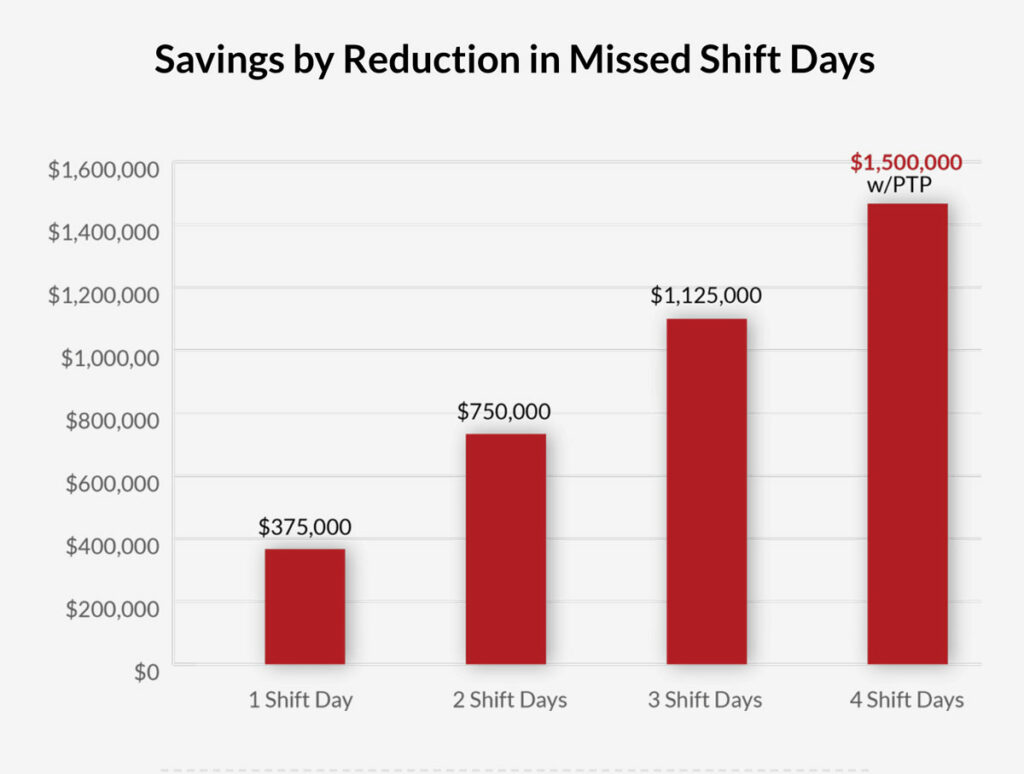Should firefighters experience the same level of care as professional athletes?

By Jim Sorgi and Joey Vandever
Firefighters deserve to receive the same elite level of care that is given to athletes who are there for our entertainment. Athletes play games and the worst thing that can happen is they lose. Firefighters, when called to action, are there to save lives—and they can’t afford to lose. Teams surround the athletes with programs to maximize their ability and get them to peak performance; this gives them the best chance to be successful. So why isn’t this standard and mindset used in the fire service?
Train Like the Tactical Athlete You Are!
A Model for Reducing Injuries and Their Costs
This article will review the challenges the fire service is currently facing, what programs high-level athletics use to help maximize performance, and the impact implementing similar programs can have on departments and their firefighters.
Challenges within the Fire Service
Firefighters are three times more likely to suffer from work-related injuries and are at a greater risk of incurring a musculoskeletal injury compared to others.
FIREFIGHTER INJURY STATISTICS*
- There were 60,825 line-of-duty firefighter injuries reported in 2019.
- Strain, sprain, or muscular pain injuries accounted for 41 percent of injuries on the fireground.
Why are firefighters taking twice as long to return to work after sustaining such injuries? When injured, firefighters often must navigate complex processes that can:
- Lengthen time before being treated
- Escalate chance of incurring additional injuries
- Increase time off, creating backfill challenges
Many departments currently have outdated systems with deficiencies like:
- No proactive or early intervention programs
- No timely access to physicians
- Cookie-cutter recovery and procedure plans for injuries
- Limited reporting and documentation systems
This lengthens the recovery time for firefighters and provides further complications for departments. Fire departments must navigate staffing challenges when firefighters are off duty because of injury. Each day a firefighter misses a shift, the department bottom line is affected.
How can you improve a firefighter’s health and recovery while saving the department and city money and other resources?
By implementing comprehensive injury prevention and performance as well as rehab and behavioral health programs!
Performance and Injury Prevention Programs

MOVEMENT ASSESSMENT
Before an athlete steps on the field, they are put through a series of assessments. With the results of these assessments, athletes are given programs to correct functional movement barriers, mitigate injury, achieve peak performance, and build confidence that their bodies can perform job duties needed.
According to a California Academy study, “poor movers” accounted for $889,263 of injury costs versus $132,925 from “good movers.”
A movement assessment is a screening of the body that helps identify muscle imbalances, reduced flexibility, core instability, muscular control, and balance issues. These imbalances and deficiencies lead to overcompensation issues that cause breakdown of tissues, pain, and chronic overuse injuries.
One preventative assessment is the DARI Motion, an FDA-approved motion technology that puts individuals through a series of motions and provides an evaluation of musculoskeletal data in under 10 minutes. With these reports, your health and wellness team can get a baseline of where each firefighter is at and what areas they can improve in to create a custom plan that better prevents injury and help them meet the demands of their job. It also provides hard data that your department can use for various tracking and benchmarking needs.

STRENGTH AND CONDITIONING
Strength and conditioning is essential in strengthening supporting muscles, evening out muscle imbalances, increasing mobility, stabilizing joints, learning proper movement patterns, enhancing coordination, and allowing people to maximize their bodies’ abilities.
According to the National Strength and Conditioning Association, higher levels of physical fitness and strength are associated with improved performance and reduces the risk of injury. Providing a dynamic, athletic-style facility with professionally guided programs that are tailored specifically for tactical athletes, like firefighters, can have a positive impact on not just their physical well-being, but their mental health as well.
NUTRITION:
A healthy diet and nutrition program throughout life promotes and supports development and aging, helps maintain a healthy body weight, and reduces the risk of chronic diseases leading to overall health and well-being.
NUTRITION STATS*:
- Almost 39 million workdays are lost to obesity-related illnesses each year.
- 80 percent of all cases of heart disease, stroke, and Type 2 diabetes could be prevented if people ate healthier and were more physically active.
- Proper nutrition can improve productivity by 20 percent.
*World Health Organization
A registered sports dietician can create nutritional courses and programs that help efficiently fuel tactical athletes and create healthier and stronger individuals. Ensuring your department eats a healthful diet, along with maintaining physical activity, is critical to enhancing physical well-being, improving mental health, and increasing job performance.
AGGRESSIVE REHABILITATION: Fitting Firefighters Needs for Rehab
How do professional athletes get back into the game so quickly? They are receiving constant rehabilitation and injury therapy! By implementing a rehabilitation program that sees your men and women multiple times a week, involving customized programs with movements and exercises that mimic movements they do on-duty, along with thorough education and ample resources, your department can see:
- Reduced time off
- Decreased chance of re-injury
- Better on-duty performance
- Physical therapy and surgery savings
By creating an engaging wellness program, departments can see a health-centered culture, improved health, enhanced job performance, boosted morale, and much more.
The greater the confidence first responders have in their physical fitness ability, the less likely they are to incur injury.
The Four Foundations of Tactical Fitness | Mobility | Conditioning | Tactical Strength | Recovery
BEHAVIORAL HEALTH
The demands, stress and trauma have an impact on firefighters and all first responders:
- Rates of post-traumatic stress disorder and depression for firefighters and police officers has been found to be as much as five times greater than the general population (Ruderman Family Foundation)
- First responders are also more likely to die by suicide than they are to die in the line of duty (Ruderman Family Foundation)
- One in five will struggle with behavioral health issues, including depression, at some point in their careers (International Association of Firefighters)
Add any physical injuries to the high stress demands of the job, and firefighters have a greater probability of battling behavioral health issues.
A fire department that prioritizes its firefighters’ fitness, nutrition, injury rehabilitation, and overall physical conditioning needs sees happier, healthier, and more successful members of its team. And one that puts just as much emphasis on the stress management and mental health needs of its firefighters sees its men and women with better moods and making healthier nutritional and fitness choices.
FIREFIGHTER MENTAL HEALTH STATISTICS
- Firefighters are three times more likely to die by suicide than die in the line of duty. (National Fallen Firefighters Foundation)
- One study found that 92 percent of firefighters surveyed were unwilling to get help because of the behavioral health stigma. (University of British Columbia)
- 83 percent of firefighters in the same study found that debriefing with an internal support team after a critical incident to be the most helpful form of support. (University of British Columbia)
It’s essential for departments to be proactive, not reactive, when it comes to mental health initiatives.
Providing resources, such as self-assessments, immediate access to psychologists and other mental health professionals, offering a support group, and creating a proactive, helpful environment allows your men and women to feel heard and supported, helps them recognize and mitigates any issues or stressors as they arise, and aids them in becoming the healthiest versions of themselves to serve safely and effectively.
By creating a holistic program that incorporates physical fitness, rehabilitation services and behavioral health initiatives, your department can see both physical and mentally strong firefighters that perform better, stay healthy and live better, more rewarding lives, inside and outside of the firehouse.

Completing the Solution: A Proactive Approach’s Impact
According to the National Fire Protection Association, the Midwest has the highest fireground injury rates when compared to the whole country, and the Indianapolis (IN) Fire Department (IFD) is no exception.
Three years ago, IFD saw:
- 57 firefighters off every day due to injuries
- 46 percent of those injuries were strain, sprain, and muscular pain-related injuries
- It cost the department $8,000 per day due to firefighters off the job
- There were 24 firefighters per month doing physical therapy
The department saw its deficiencies and looked for a partner to help better serve their men and women’s wellness needs.
ProTeam Tactical Performance provided its comprehensive services to help allow tactical professionals to receive better, more effective care while the department and city see maximum cost savings.
With an innovative, holistic, and personalized approach, the Indianapolis Fire Department has seen:
- 59 percent savings in physical therapy costs
- 61 percent savings on durable medical equipment
- 69 percent reduction in surgeries
In fact, with their expedited care and recovery solutions, ProTeam has helped Indianapolis firefighters safely and quickly return to duty, decreasing the department’s duration of pay for both the injured’s time off and their back-fills’ time on the job.
A proactive approach with comprehensive programs and holistic services can help your fire department enhance your men and women’s physical and mental well-being for optimal performance in the line of duty and maximum enjoyment years after they retire.
How can you maximize your department’s performance?
Jim Sorgi and Joey Vandever run ProTeam Tactical Performance, a company that provides personalized rehabilitation solutions and preventative programs to help first responders recover faster and stay healthier. As former professional athletes, Jim and Joey understand the importance of quality treatment and recovery solutions and believe that tactical professionals should be treated like the athletes they are.

